Diaspora
If the meaning of the prayer was not passed down to you,
find it through holier means than translation.
Cling to the rhythm instead.
If you were not taught the rhythm, memorize the clang
of knife against yam against wooden cutting board.
Keep it ringing, ringing in your ears.
If not the ring,
then the Bombay jazz club
and its green lanterns swaying in the long, long night
If you were not given the religion, then at least
Boompa’s rosary beads,
with their memories
indented in thick amber,
the gold Zarathustra hanging from a neck
and tattooed on a sunburnt back.
If the traditions were never taught to you,
then cling to tea time always served at 2pm.
Display the cups and remember
elders do not take their tea with sugar,
like you do.
You have only a fraction of their blood.
You thicken your water with milk.
If home did not fit in the carry on compartment,
then the sprigs of lemongrass from the garden will do.
The tea bags brought from India will do.
The reusable garland will do.
The passport’s golden lions
show a compass of 3 directions.
The fourth will do, too.
With its back facing you,
and its open jaws the homeland.
If the orthodox genealogy did not show up to the altar
of any of the son’s weddings, identity will celebrate
the melting pot mothers. Inheritance
blooms a grateful garland
around the brownish baby’s plump smile.
Her laughter, an anthem.
Her heartbeat, a golden rhythm.
by Azura Tyabji
from Split This Rock

 But musically, Fetch astonishes, the work of an artist absolutely confident in the experiment she’s conducting, her objective aligning happily with the listener’s pleasure. This is a true rarity, the artistic advancement that offers joy or surprise or comfort. (I thought of Mitchell’s The Hissing of Summer Lawns or Björk’s Vespertine or David Bowie’s Station to Station.) The album’s tactics—heavy beats, cut-and-paste vocal play—might frustrate some who prefer Apple’s earlier work, waltzy and cutting.
But musically, Fetch astonishes, the work of an artist absolutely confident in the experiment she’s conducting, her objective aligning happily with the listener’s pleasure. This is a true rarity, the artistic advancement that offers joy or surprise or comfort. (I thought of Mitchell’s The Hissing of Summer Lawns or Björk’s Vespertine or David Bowie’s Station to Station.) The album’s tactics—heavy beats, cut-and-paste vocal play—might frustrate some who prefer Apple’s earlier work, waltzy and cutting.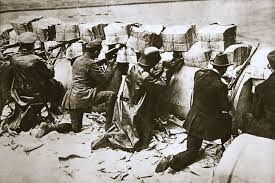 The year 1918 was an extraordinary historical moment. As the Great War roared to an end after four long years of blood and horror, it appeared briefly that the future of the world lay wide open. The old order was overthrown. States were collapsing. Monarchs, the sons of dynasties that had ruled eastern and central Europe for centuries, abdicated and fled. Noisy, violent crowds of hungry civilians and grim, weary soldiers flooded grey city streets, demanding peace and a better life. In the countryside, peasants chased away the lords who had ruled over them and seized their land. Mad, bad and dangerous revolutionaries pushing radical ideals and preaching utopia saw that their hour had struck. The German theologian Ernst Troeltsch aptly named this time, when no one had a firm grip on power and anything appeared possible, ‘the dreamland of the armistice period’. These excellent books by Jonathan Schneer and Robert Gerwarth both show just how much was at stake and capture the breathless excitement and mortal fear that the upheaval generated.
The year 1918 was an extraordinary historical moment. As the Great War roared to an end after four long years of blood and horror, it appeared briefly that the future of the world lay wide open. The old order was overthrown. States were collapsing. Monarchs, the sons of dynasties that had ruled eastern and central Europe for centuries, abdicated and fled. Noisy, violent crowds of hungry civilians and grim, weary soldiers flooded grey city streets, demanding peace and a better life. In the countryside, peasants chased away the lords who had ruled over them and seized their land. Mad, bad and dangerous revolutionaries pushing radical ideals and preaching utopia saw that their hour had struck. The German theologian Ernst Troeltsch aptly named this time, when no one had a firm grip on power and anything appeared possible, ‘the dreamland of the armistice period’. These excellent books by Jonathan Schneer and Robert Gerwarth both show just how much was at stake and capture the breathless excitement and mortal fear that the upheaval generated.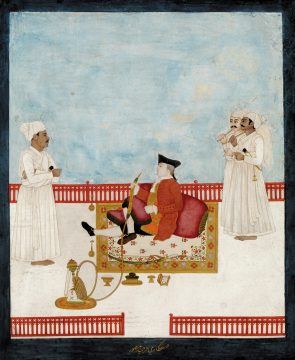
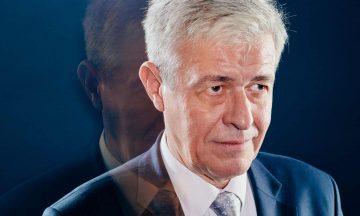 Neuroscientist
Neuroscientist  In our current political climate, it’s sad but not surprising that a U.S. senator would accuse China’s “brightest minds” of studying in America only to return home “to compete for our jobs, to take our business, and ultimately to steal our property.”
In our current political climate, it’s sad but not surprising that a U.S. senator would accuse China’s “brightest minds” of studying in America only to return home “to compete for our jobs, to take our business, and ultimately to steal our property.” Few things are more unexpected than a genuinely inspirational memoir by a freshman member of Congress. If you’re looking for the perfect antidote to the perpetual tweetstorm of insanity and hatred from Donald Trump, try this beautiful new book from the
Few things are more unexpected than a genuinely inspirational memoir by a freshman member of Congress. If you’re looking for the perfect antidote to the perpetual tweetstorm of insanity and hatred from Donald Trump, try this beautiful new book from the 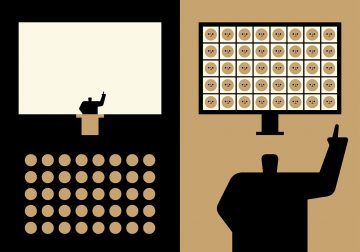 Before the COVID-19 pandemic, Adam Fortais had never attended a virtual conference. Now he’s sold on them — and doesn’t want to go back to conventional, in-person gatherings. That’s because of his experience of helping to instigate some virtual sessions for the March meeting of the American Physical Society (APS), after the organization
Before the COVID-19 pandemic, Adam Fortais had never attended a virtual conference. Now he’s sold on them — and doesn’t want to go back to conventional, in-person gatherings. That’s because of his experience of helping to instigate some virtual sessions for the March meeting of the American Physical Society (APS), after the organization 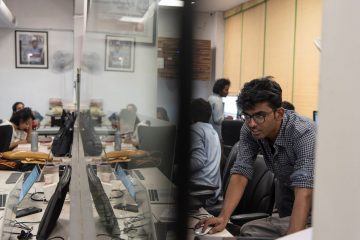
 There are some problems for which it’s very hard to find the answer, but very easy to check the answer if someone gives it to you. At least, we think there are such problems; whether or not they really exist is the famous
There are some problems for which it’s very hard to find the answer, but very easy to check the answer if someone gives it to you. At least, we think there are such problems; whether or not they really exist is the famous 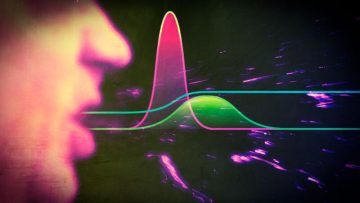 One of the least expected aspects of 2020 has been the fact that epidemiological models have become both front-page news and a political football. Public health officials have consulted with epidemiological modelers for decades as they’ve attempted to handle diseases ranging from HIV to the seasonal flu. Before 2020, it had been rare for the role these models play to be recognized outside of this small circle of health policymakers.
One of the least expected aspects of 2020 has been the fact that epidemiological models have become both front-page news and a political football. Public health officials have consulted with epidemiological modelers for decades as they’ve attempted to handle diseases ranging from HIV to the seasonal flu. Before 2020, it had been rare for the role these models play to be recognized outside of this small circle of health policymakers.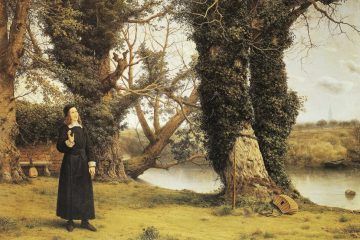 Published shortly after his death in 1633,
Published shortly after his death in 1633,  “I am unfortunately a complicated and difficult subject.” With these words of Martin Buber, Paul Mendes-Flohr lays down the challenge for his meticulous biography of the distinguished Jewish scholar, humanist, and author of I and Thou. “Complicated,” to be sure, and “difficult,” certainly; that goes with the territory of Buber’s at times maze-like philosophical explorations and heavily Germanic articulation. And one may add to these challenges the fact that—to quote this biographer—Buber was a “contested figure who evoked passionate, conflicting opinions about his person and his thought.” Yet these obstacles are by no means insurmountable, thanks to Mendes-Flohr’s philosophical acumen and gift for succinct expression. Indeed, in his capable hands Buber’s life makes for an engrossing, instructive tale, and an exemplary contribution to Yale’s “Jewish Lives Series.”
“I am unfortunately a complicated and difficult subject.” With these words of Martin Buber, Paul Mendes-Flohr lays down the challenge for his meticulous biography of the distinguished Jewish scholar, humanist, and author of I and Thou. “Complicated,” to be sure, and “difficult,” certainly; that goes with the territory of Buber’s at times maze-like philosophical explorations and heavily Germanic articulation. And one may add to these challenges the fact that—to quote this biographer—Buber was a “contested figure who evoked passionate, conflicting opinions about his person and his thought.” Yet these obstacles are by no means insurmountable, thanks to Mendes-Flohr’s philosophical acumen and gift for succinct expression. Indeed, in his capable hands Buber’s life makes for an engrossing, instructive tale, and an exemplary contribution to Yale’s “Jewish Lives Series.”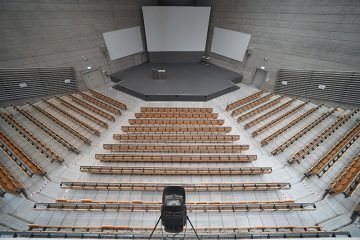 As universities face major changes, their financial outlook is becoming dire. Revenues are plummeting as students (particularly international ones) remain home or rethink future plans, and endowment funds implode as stock markets drop.
As universities face major changes, their financial outlook is becoming dire. Revenues are plummeting as students (particularly international ones) remain home or rethink future plans, and endowment funds implode as stock markets drop.